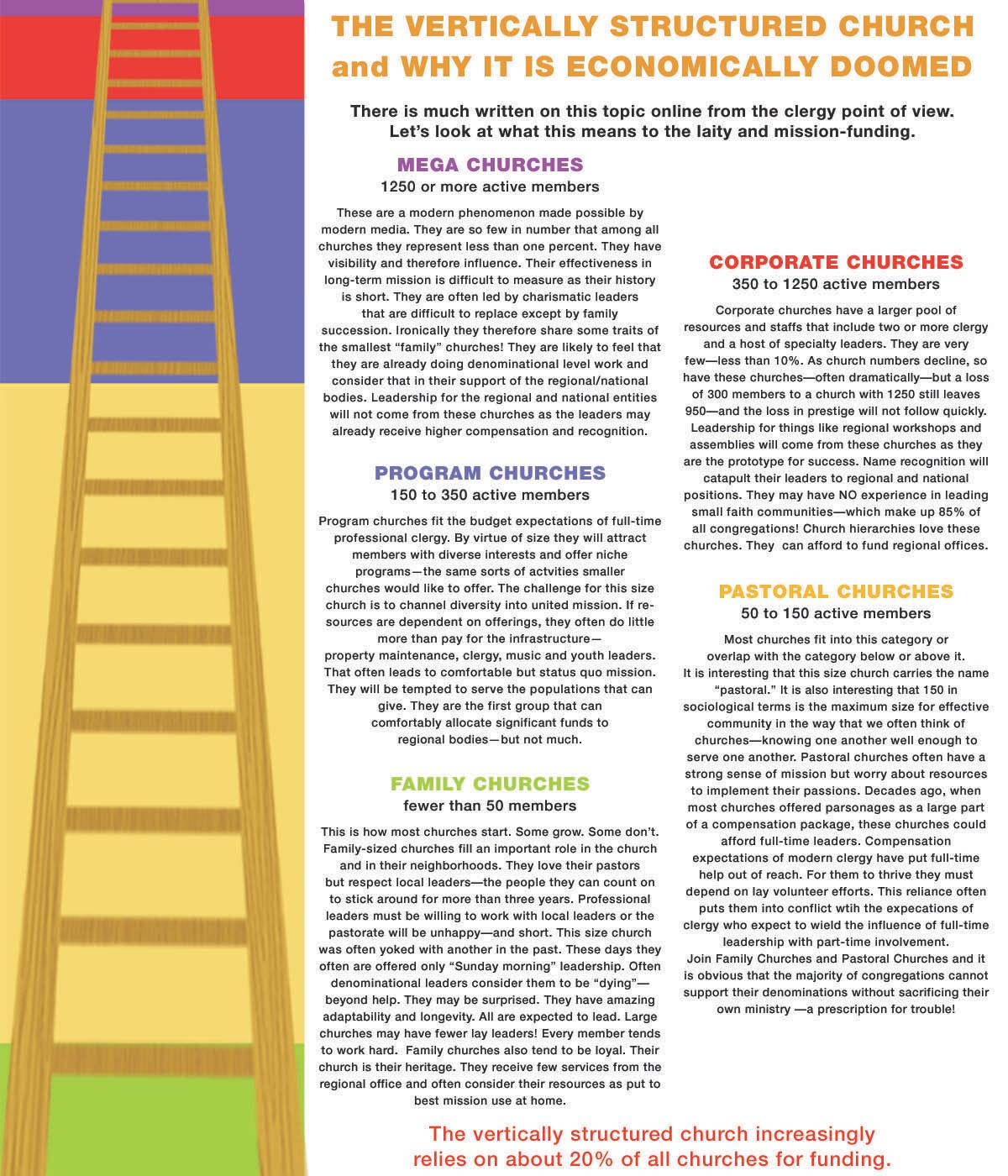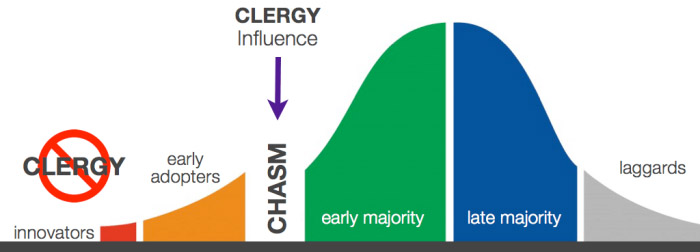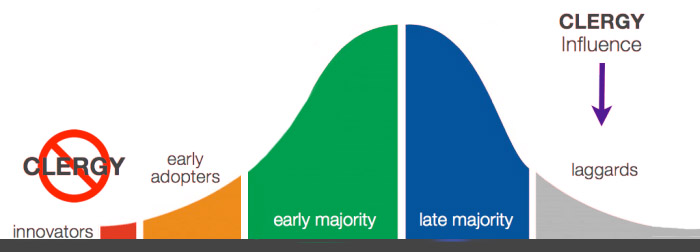 In the sure and certain hope of the Resurrection
In the sure and certain hope of the Resurrection
Tim Shapiro posted on the Center for Congregations’ Congregational Resource Guide blog.
This post is short and far from comprehensive. Even so, it manages to capture the mindset of a cloudy denominational Church vision.
He begins by acknowledging that congregational decline may have reached a point where failure is irreversible.
The “why” that quickly follows is presented as accepted. The ability to afford a full-time pastor is the primary measure of most denominational assessments for congregational viability.
The churches we now label “mainline” would never have become “mainline” if they had measured their prospects by the ability to afford a full-time pastor when they first started out.
The groundwork for New World Christianity was laid by the laity, who typically sent word to Europe when they thought they had reached a point where clergy were affordable.
Churches became integral parts of American society by the work of itinerant pastors who may have visited congregations only a few times a year. Laity held the fort and grew the army in between clergy visits.
Lutherans had H. M. Muhlenberg in the east. He served three congregations, started others and gave itinerant support to congregations from New York to Georgia. In doing so, he created the Lutheran denomination in America.
As populations moved west, prairie and frontier churches followed suit—sending word of their needs to eastern seminaries or writing to the Old Country for pastoral help when they could afford it.
That wasn’t the end of lay influence in church growth by any means. The lay-led Sunday School movement of the 19th and 20th centuries was largely responsible for congregational growth.
It is only in recent decades that pastors were given the status of chief executives. That role is still not part of many constitutions even as it is practiced.
Congregations today are expected to have a pastor in charge. This modern expectation places unbearable stress on the foundation of ministry during tough times—when people need their churches the most.
However lofty a congregation’s mission and vision statements, mission follows only if the congregations, 90% of which have fewer than 250 active members, can support a full-time pastor, small support staff and building. With a bare bones budget of $150,000, every man, woman and child in a congregation must give $600 per year. In truth, any congregation of 250 has only a few people contributing at that level.
That means there is no budget for mission. As congregations invest more in CEO-level leadership, they depend on CEO pastors to do the work. This probably works for a while. When trouble surfaces, years into decline, the power structure of the Church is not about to revert. The only plan is to get along while the money holds out. Plans revolve around making the money last. Long-term pastorates, still seen as desirable, become rare as pastors look for positions where success might be more possible.
Lay leadership accept submissive roles—sometimes willingly, sometimes less so. Ego wars, generally known as congregational conflict, often result. There will be a faction in most churches that see clergy holding executive authority as fitting. There will be other factions that question their value as volunteers. Can they be of greater service elsewhere? They slowly disappear, leaving an executive pastor with little support.
Perhaps this is irreversible—a failure of our collective faith and the message we are all commissioned to deliver. Perhaps the struggle is now so dire that it reaches beyond the congregation into the regional and national offices. Perhaps this dictates that the future of the Church is a contest to determine who is the last standing—the local churches or the denominational headquarters.
Shapiro closes with an observation about the pockets of hope in congregations that manage as anomalies among failures.
Many thriving congregations are new. They aren’t included in the researchers’ databases. Also, their stories do not fit a normative pattern of problem and then solution. The stories are personal. The stories are idiosyncratic. They are signs of God’s free Spirit. They are about new creations. They are signs of leadership courage and maturity.
His observation does not end there. He adds this:
Such exceptions often are dependent on a leader’s particular charisma and thus not replicable.
Ah! But it’s that charisma that big buck churches often rely upon. It’s that charisma that attracts investment and those with business savvy. And it’s that charisma that leaves a hole in communities when that leader moves on. When that happens, the laity emerge from the corners, ready to take up the cause. But denominations look down upon them. “But you can no longer afford a full-time pastor.”
Perhaps the situation would not be so dire, if laity never had been swept aside.
Shapiro ends his post with a call to action. Share the stories of churches that flourish against the odds. That’s difficult to do when church news is controlled by denominational leadership who want their own definition of success to populate the headlines. They want to tell the story of the pastor that rides in and manages a miracle.
But wait!
If we believe in our calling, if we believe our own message, we do not believe that anything within God’s control is “irreversible.” Do we? If mountains can be moved, cannot churches thrive?
Here are five steps necessary for a mountain-moving miracle.
- Believe.
- Be courageous. Or as it is written in Joshua: Be bold. Be strong. For the Lord God is with you.
- Be action-oriented. It is all in the often over-looked book of James. There must be action, a plan.
- Set realistic goals. Salaries of full-time pastors have become unrealistic priorities. They cripple congregations that can still afford the salaries but not much more. So what goals can congregations achieve with the resources they have? What stepping stones can lead congregations to new possibilities? Caretaker pastors are not the answer. Even part-time pastors must have growth goals.
- Enlist partners. Expecting a full-time pastor to work miracles alone is laying the groundwork for years playing the blame game. Congregations must interact with their communities—individuals, businesses, schools, and government. Start with the people in the pew. Move quickly to articulate your mission in public forums—in other words, online. Make way for miracles.















